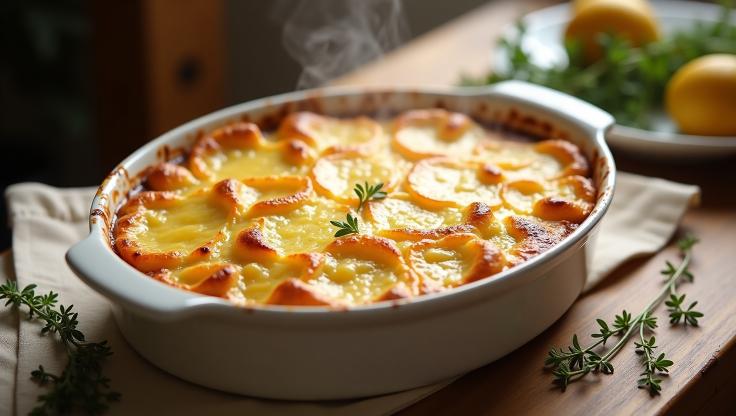Table of Contents
Few dishes evoke the timelessness and comfort of a well-made scalloped potato casserole. This quintessential side transforms simple ingredients into a rich, savory dish that complements any main course.
Understanding the essentials of a great scalloped potatoes recipe will empower you to create a flavorful and satisfying accompaniment that will impress family and guests alike. This versatile dish blends thinly sliced potatoes, a creamy sauce, and optional additions like cheese, garlic, and herbs to achieve a depth of flavor that elevates any meal.
Here is everything you need to know to prepare, modify, and enjoy this classic dish.
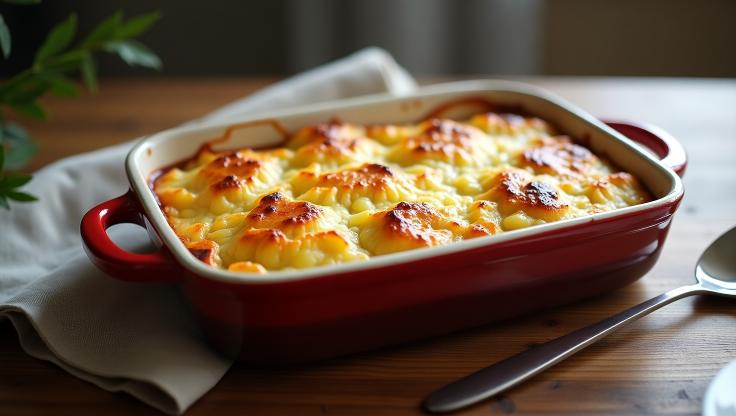
Scalloped Potatoes Ingredients
Creating the perfect scalloped potatoes begins with choosing the right ingredients. Thinly sliced potatoes form the foundation of this dish, providing the starchy goodness that integrates harmoniously with other components. A rich sauce, traditionally made from butter, flour, and either milk or cream, envelops the potatoes, creating a silky layer of flavor. Enhancements like garlic and onion infuse the dish with a robust taste, often complemented by cheese such as cheddar or Gruyère for a savory and creamy blend. Herbs like thyme or nutmeg can be optionally added for extra depth and aromatic complexity. Each ingredient contributes to a cohesive, tasty profile, transforming humble potatoes into an elegant ensemble.
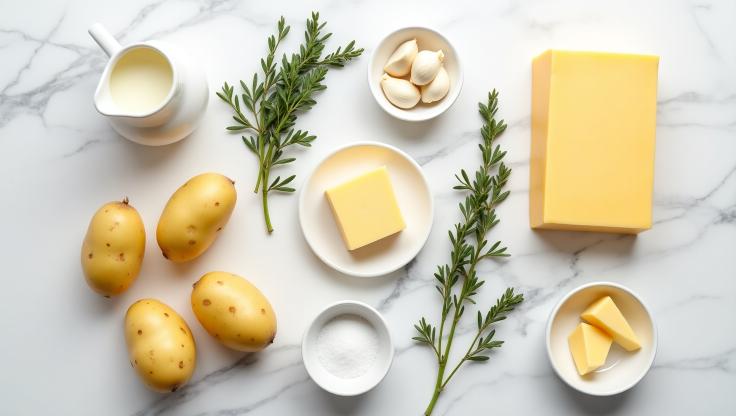
– Thinly sliced potatoes: Use a mandoline for precise and even slices.
– Creamy sauce: Combine butter, flour, and milk or cream for richness.
– Garlic and onion: Chopped finely to enhance depth.
– Cheese: Cheddar or Gruyère layered for a savory taste.
– Optional herbs: Thyme or nutmeg for aromatic depth.
How to Make Scalloped Potatoes
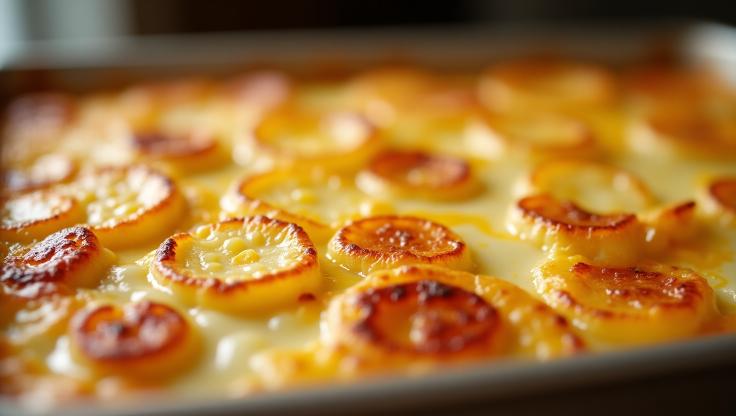
Preparing scalloped potatoes involves a few careful steps to ensure a uniformly delicious result. Begin by preheating your oven to the correct temperature and greasing a baking dish to prevent the potatoes from sticking. The evenness of the potato slices is vital — utilize a mandoline or sharp knife to achieve uniformity, as this promotes even cooking. Alternately layer these slices in your dish and pour over a velvety sauce made by combining butter, flour, milk, and cheese. Season adequately with herbs like garlic, salt, and pepper to enhance the flavor profile. Bake until the potatoes are tender and the top is crisp and golden brown, letting the dish cool slightly before serving to allow flavors to meld further.
– Preheat oven: Typically around 375°F (190°C) to 400°F (200°C).
– Evenly slice potatoes: About 1/8-inch thick for uniform cooking.
– Prepare creamy sauce: Stir butter, flour, milk, and cheese over medium heat.
– Season: Use salt, pepper, garlic, and optional herbs.
– Bake: Until tender and golden brown, cooling slightly before serving.
What to Serve with Scalloped Potatoes
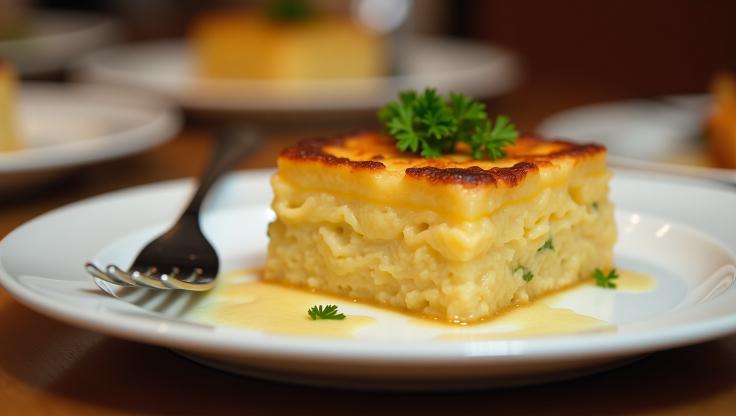
Scalloped potatoes are versatile and complement various proteins and sides. Pairing them with roasted meats such as chicken, beef, or ham creates a hearty, satisfying meal.
Introduce a refreshing contrast with a crisp green salad or roasted vegetables, which not only add nutritional balance but also visual appeal. Serve alongside a light, tangy dish like coleslaw to cut through the potatoes’ creaminess.
Complete the experience with a crusty baguette, perfect for soaking up the luscious sauce. Elevate the meal with a glass of white wine or a sparkling beverage, ensuring a harmonious dining experience.
– Roasted meats: Like chicken, ham, or beef.
– Fresh elements: A crisp green salad or roasted vegetables.
– Light side dishes: Coleslaw for tangy contrast.
– Bread option: Crusty baguette to soak up sauce.
– Beverage pairing: White wine or sparkling beverage.
Instructions

Crafting a stellar scalloped potatoes dish involves a series of carefully executed steps. Start by preheating the oven and preparing a baking dish with a thin layer of butter or oil.
Slice potatoes evenly to ensure that all pieces cook at the same rate. Construct the sauce by combining butter, flour, and milk over medium heat until smooth, then stir in your selected cheese.
Begin layering the potatoes and sauce alternately in the dish. Cover with foil and bake for a specified time to meld flavors; uncover to achieve a golden-brown crust.
Allow the dish to cool slightly to enhance flavor cohesiveness and ease serving. After allowing the dish to rest, carefully slice and serve the scalloped potatoes while still warm. The creamy sauce should cling to each layer, and the top should have a delicate, golden crust.
For a professional presentation, use a spatula to lift neat portions onto plates, keeping the layers intact. If you’d like to add a touch of freshness, sprinkle finely chopped parsley or chives over the top just before serving.
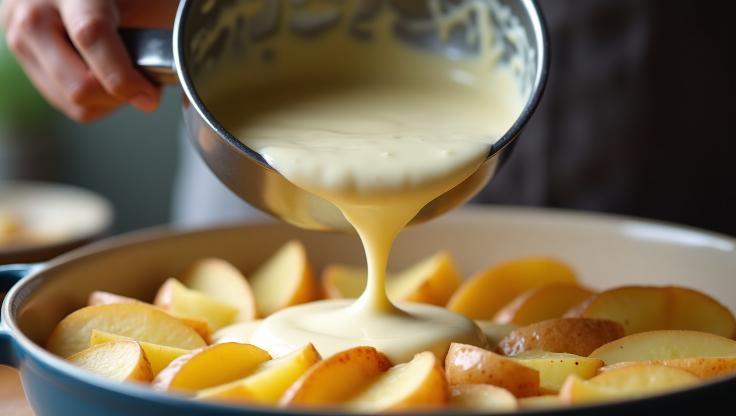
This dish is perfect for family gatherings and special occasions, offering comfort and satisfaction in every bite.
For best results:
- Test doneness by piercing the center with a fork; it should slide in effortlessly without resistance.
- Check sauce consistency; it should be creamy but not runny. If it’s too thin, allow the dish to rest a few extra minutes before serving.
- Serve immediately for the best texture, as scalloped potatoes can thicken further as they cool.
Whether you’re preparing this scalloped potatoes recipe for a weeknight dinner or a special occasion, following these steps ensures each bite delivers rich, comforting flavor.
Make-Ahead and Meal Prep Tips for Scalloped Potatoes Recipe
One of the best things about a scalloped potatoes recipe is how well it works for make-ahead cooking, especially during busy holidays or family gatherings. Preparing it in advance allows you to focus on other dishes while ensuring this classic side is still warm and ready to serve.
To Prepare Ahead:
- Assemble the dish completely, cover it tightly with foil, and refrigerate for up to 24 hours before baking.
- When ready to cook, let it sit at room temperature for about 20–30 minutes before placing it in the oven to ensure even heating.
To Par-Bake for Later:
- Bake the scalloped potatoes for about 75% of the total time, allow them to cool, then refrigerate.
- On the day of serving, finish baking uncovered until golden and bubbly.
For Freezer Storage:
- Bake the dish fully, let it cool completely, and wrap it well in plastic wrap and foil.
- Freeze for up to 2 months. Thaw overnight in the refrigerator and reheat covered at 325°F (165°C) until warmed through.
More recipes here !
A Brief History of the Scalloped Potatoes Recipe
The scalloped potatoes recipe has humble yet flavorful roots that trace back centuries. While the exact origin is debated, most food historians agree that scalloped-style potato dishes emerged in Europe during the late 18th to early 19th century, shortly after potatoes became a common staple in European kitchens.
The term “scalloped” is thought to come from the Old English word “collop”, meaning slices of meat or food, referring to the thinly sliced potatoes layered in the dish. In France, similar preparations appeared under the name gratin dauphinois — a baked potato dish with cream, butter, and sometimes cheese — originating from the Dauphiné region. The French version traditionally avoided cheese, while the American adaptation embraced it generously, leading to the rich, cheesy scalloped potatoes many know today.
As potatoes spread across the globe, the recipe evolved with local twists. In the United States, it became a popular holiday side dish, often served at Easter, Christmas, and Thanksgiving alongside roasted meats. In Canada, a version known as potatoes au gratin became a household favorite, while in the UK, cream and cheese combinations varied depending on regional preferences.
Today, the scalloped potatoes recipe remains a symbol of comfort food — adaptable, flavorful, and timeless. Its enduring popularity lies in its simplicity: thin potatoes, a creamy sauce, and the slow magic of oven baking.

